Fujifilm boasts a wide selection of cameras for all skill levels. With cameras that are both functional and stylish, Fujifilm has become one of the fastest-growing camera brands in recent years.
But which is the best Fujifilm camera for you?
Well, that depends on your skill level, what you are shooting, and your personal preference.
In this post, we are relating technical specifications and camera performance to the creative needs of photographers like you.
It is true that Fujifilm is lacking a full-frame option. According to their general manager, Fujifilm will not consider a full-frame camera anytime soon. However, Fujifilm has mastered its lineup of APS-C and medium format mirrorless cameras. So much so that their Fujifilm X-T3 is arguably the best camera on the market today.
Unsurprisingly, that is #1 on our list too!
Before we get into the individual reviews, let’s have a look at a summary of what we are recommending in this post.
The 10 Best Fujifilm Cameras In 2022
Fujifilm X-T3
[amazon box=”B07H49QWN4″ template=”vertical”]
Best all-round Fujifilm camera for professional photographers and videographers
Sensor: APS-C sized 23.5 x 15.6mm | Resolution: 26.1 megapixels | Lens Mount: Fujifilm X | Autofocus points: 2.16 million (up to 425 selectable) | LCD type: Tilting touchscreen, 1.04 million dots | Continuous Drive: Up to 30 fps JPEG/RAW (at 16.6 MP) | Viewfinder: 3.69 million dot Electronic Viewfinder | Maximum Video Resolution: DCI 4K (4096 x 2160) up to 60 fps | Weather-Sealed: Yes | User Level: Professional | Weight: 1406g (with battery + card)
The weather-sealed, versatile Fujifilm X-T3 is not only the best all-around camera in Fujifilm’s line-up but possibly the best APS-C camera currently on the market.
Included with the X-T3 is Fujifilm’s first APS-C BSI (Back Sensor Illuminated) sensor. Unfortunately, it lacks the low-light performance you see in Sony and Nikon’s full-frame BSI line. But it does boast 26.1 megapixels, which is slightly more than the 16-24 MP of Fuji’s older APS-C line.
Thanks to a new X-Trans IV CMOS processor, the X-T3 hits speeds of up to 30 frames per second at a respectable 16.6MP.
In addition, 2.16 million phase-detection pixels are scattered across the sensor for nearly 100% coverage and significantly improved Auto Focus (AF) performance; even with Fuji’s older XF lenses like the 35mm f1.4.
Plus, the rear LCD touchscreen tilts in 3 different directions, for added versatility when shooting.
Video Capabilities
Professional video lovers rejoice! The X-T3 offers both DCI (4096 x 2160) and UHD (Ultra-High-Definition) 4K (3840 x 2160) from 24 to 60 fps (frames per second) with bitrates up to 400 Megabits per second (Mbps).
It also boasts F-log for flat footage and easy color grading. If F-log is too unwieldy, the X-T3’s Eterna Film Simulation creates an instant cinematic look in-camera, with little need for additional post-processing.
Overall, the X-T3 is probably the best Fujifilm camera for professional APS-C photographers.
Fujifilm X-T30
[amazon box=”B07NQBKMR4″ template=”vertical”]
Professional features at a discount
Sensor: APS-C sized 23.5 x 15.6mm | Resolution: 26.1 megapixels | Lens Mount: Fujifilm X | Autofocus points: 2.16 million (up to 425 selectable) | LCD type: Tilting 3-inch touchscreen, 1.04 million dots | Continuous Drive: Up to 30 fps JPEG/RAW (at 16.6 MP) | Viewfinder: 2.36 million dot Electronic Viewfinder | Maximum Video Resolution: DCI 4K (4096 x 2160) up to 30 fps | Weather-Sealed: No | User Level: Intermediate | Weight: 1161g (with battery + card)
The main draw of the Fujifilm X-T30 is access to the X-T3’s advanced BSI sensor, for a lower price.
Sadly it lacks the features of the X-T3; there’s no weather sealing, no customizable Fn buttons, or a dedicated ISO dial, plus a smaller and lower-resolution EVF (2.36 M dots).
The X-T30 and X-T30 both offer the Color Chrome effect found on the GFX-line. This setting deepens colors without losing gradation, so differences in hues remain visible.
For a significant discount over the X-T3, you have the same 26.1 BSI sensor with X-Trans IV CMOS processing, in a lighter body.
Video Capabilities
The 200 Mbps bitrate is still respectable and the X-T30 records in F-log, Eterna, and includes zebra striping and other high-end videography features. It boasts a 4K video recording that maxes out at 30 fps and 200 Mbps.
If you’re a fan of Fuji’s advanced color science, the X-T30 is the best Fujifilm camera that offers professional features at a discount.
Fujifilm X-H1
[amazon box=”B079PTRNKK” template=”vertical”]
Superior image stabilization and a silent shutter; great for pros
Sensor: APS-C sized 23.5 x 15.6mm | Resolution: 24.3 megapixels | Lens Mount: Fujifilm X | Autofocus points: 325 phase-detection points | LCD type: Tilting 3-inch touchscreen, 1.04 million dots | Continuous Drive: Up to 14 fps JPEG/RAW | Viewfinder: 3.69 million dot Electronic Viewfinder | Maximum Video Resolution: DCI 4K (4096 x 2160) up to 24 fps, UHD 4K. (3840 x 2160) up to 30 fps | Weather-Sealed: Yes | User Level: Professional | Weight: 997g (with battery + card)
Professional photographers looking for a bit more heft and grip to their mirrorless body may find the Fujifilm X-H1 a perfect fit. It’s heavy, but not as big as a pro DSLR. All that space houses Fujifilm’s first APS-C In-body image stabilization (IBIS) system.
IBIS maximizes image sharpness when shooting without a tripod, and also helps when shooting with slower shutter speeds. The X-H1 combines IBIS with OIS (optical image stabilization) for up to 5.5 shutter speed stops of stabilization.
Instead of an Exposure Compensation dial, the X-H1 includes a top customizable LCD display, for quick viewing of aperture, shutter speed, and other settings.
The shutter button uses a unique dampening system to keep shutter shock from impacting sharpness, something no other camera in the Fujifilm line-up has at this time. Having used it myself, it’s incredibly sensitive and whisper-quiet: the best mechanical shutter on the market.
The X-H1 uses the same sensor and X-Trans III processor as the X-T2. It also boasts a weather-sealed body that’s 25% thicker than the X-T2/3. It has 325 phase detection pixels across the central sensor area, providing snappy autofocus performance, with contrast detection covering the outer edges.
Video Capabilities
The X-H1 can also record video in F-log, Eterna, and DCI 4K, much like the X-T3, though at a lower bitrate (up to 200 Mbps).
Overall, the X-H1 feels like a baby GFX 50S. If you’re looking for the best Fujifilm camera with IBIS and don’t want to pay GFX prices, the X-H1 is your best bet.
Fujifilm X-Pro 2
[amazon box=”B01A8DUR74″ template=”vertical”]
Rangefinder option, best Fujifilm camera for street and portrait photography
Sensor: APS-C sized 23.5 x 15.6mm | Resolution: 24.3 megapixels | Lens Mount: Fujifilm X | Autofocus points: 77 Phase, 196 contrast-detection points | LCD type: Fixed, 1.62 million dots | Continuous Drive: Up to 8 fps JPEG/RAW | Viewfinder: 2.36 million dot Hybrid Multi Viewfinder (EVF/OVF) | Maximum Video Resolution: UHD 4K (3840 x 2160) up to 30 fps | Weather-Sealed: Yes | User Level: Intermediate/Professional | Weight: 1315g (with battery + card)
As a rangefinder camera, the X-Pro 2 uses an optical viewfinder that shows not only the frame but the scene surrounding it. It includes a 2.36M-dot EVF option, making it what Fuji calls a ‘hybrid multi viewfinder.
It uses the same X-Trans III processor as the X-T2 and X-H1. Plus it can shoot up to 24.3 MP. Plus the APS-C sensor is housed in a lighter weather-proof body.
While it offers the same resolution, the X-Pro 2 uses 77 phases and 196 contrast-detection points, a notable decrease over the models mentioned previously.
Continuous burst maxes out at 8 fps JPEG/RAW as well, making it a camera for more deliberate photography.
Video Capabilities
If high-resolution videography is what you need, the X-Pro 2 shoots UHD 4K (3840 x 2160) at up to 30 fps at 100 Mbps. The 1.62M dot LCD is a higher resolution than the X-T3, but it does not articulate in any way.
The X-Pro 2 is the best Fujifilm camera for street and portrait photographers who want an EVF option.
Fujifilm X-E3
[amazon box=”B0759G8F8N” template=”vertical”]
Entry-level budget rangefinder, ideal for vloggers
Sensor: APS-C sized 23.5 x 15.6mm | Resolution: 24.3 megapixels | Lens Mount: Fujifilm X | Autofocus points: 91 Phase Detection points | LCD type: Fixed 3-inch, 1.04 million dot touchscreen | Continuous Drive: Up to 14 fps JPEG/RAW | Viewfinder: 2.36 million dot Electronic Viewfinder | Maximum Video Resolution: UHD 4K (3840 x 2160) up to 30 fps | Weather-Sealed: No | User Level: Beginner | Weight: 998g (with battery + card)
While the Fujifilm X-E3 is a rangefinder, much like the X-Pro 2, it uses a 2.36M-dot EVF rather than the hybrid EVF/OVF of the latter. This entry-level rangefinder model uses the same sensor as the X-Pro 2 and X-T2 but comes with fewer focus points.
Still, 91 phase-detection points are better than some pro-level DSLR cameras on the market.
Touchscreen functionality is a new addition to this line-up for easier handling and focuses on point acquisition. The lack, however, of weather sealing, additional card slots, or IBIS, helps keep the weight down.
The X-E3 has a faster burst rate than the X-Pro 2 (14 fps JPEG/RAW vs 8 fps). However, the X-E3 is a newer camera and can only maintain this for 35 JPEG exposures, while the X-Pro 2 can keep snapping for up to 85 JPEG exposures.
Video Capabilities
Like most Fujifilm mirrorless cameras, the X-E3 can shoot UHD 4K (3840 x 2160) at up to 30 fps at a respectable 100 Mbps.
Pro videographers will prefer the X-T3 or X-H1 for DCI 4K and higher bitrates. However, vloggers and casual video shooters will have nothing to complain about.
The X-E3 is the best Fujifilm camera for rangefinder lovers on a budget.
Fujifilm GFX 50R
[amazon box=”B07HMTVDS2 ” template=”vertical”]
Fujifilm’s most affordable medium format camera
Sensor: Medium format sized 43.8 x 32.9mm | Resolution: 51.4 megapixels | Lens Mount: Fujifilm G | Autofocus points: 117 contrast-detection points | LCD type: Tilting 2.36 million dot touchscreen | Continuous Drive: Up to 3 fps JPEG/RAW | Viewfinder: 3.69 million dot Electronic Viewfinder | Maximum Video Resolution: Full HD (1920 x 1080) up to 30 fps | Weather-Sealed: Yes | User Level: Professional | Weight: 775g (with battery + card)
Fujifilm opted to skip the Sony/Canon/Nikon/Panasonic full-frame battle and go straight into the larger, medium format sensors. Sized at 43.8 x 32.9 mm, these medium format cameras can produce up to 70% larger images compared to full-frame.
The price tag is proof that Fuji intends to make the medium format more accessible. That being said, however, the Fujifilm GFX 50R is still an expensive choice for the average person.
However, it is incredibly light for a medium format camera. Some like the Panasonic LUMIX S1 weight even more, despite the smaller sensor.
The GFX 50R is trimmed down to almost no features. We get the same 51.4 MP sensor as the 50S, but no top plate LCD or blocky viewfinder, and less grip.
Circling the shutter button is a unique dial, customizable for ISO, aperture, or shutter speed. Like the X-E3, the GFX 50R is a rangefinder model.
Video Capabilities
The video specs are unimpressive compared to other cameras on this list; full HD at up to 30 fps at 36 Mbps. But then, who buys a medium format for video?
This is the best Fujifilm camera for photographers who adore medium format and want a portable, practical model (in terms of weight and price).
Until recently, medium format cameras were twice the weight and a minimum of twice the price of the GFX 50R.
Professional studio and model shooters may still prefer the GFX 50S and 100 for the Single Lens Reflex design and/or higher resolution they provide. But this is a great choice for those new to the medium format.
Fujifilm GFX 50S
[amazon box=”B01MZARM64″ template=”vertical”]
Affordable, SLR-style medium format rangefinder
Sensor: Medium format sized 43.8 x 32.9mm | Resolution: 51.4 megapixels | Lens Mount: Fujifilm G | Autofocus points: 425 contrast-detection points | LCD type: Tilting 3.2-inch touchscreen, 3.69 million dots | Continuous Drive: Up to 3 fps JPEG/RAW | Viewfinder: 2.36 million dot Electronic Viewfinder | Maximum Video Resolution: Full HD (1920 x 1080) up to 30 fps | Weather-Sealed: Yes | User Level: Professional | Weight: 2267g. (with viewfinder)
The Fujifilm GFX 50S is another entry into the ‘affordable’ medium format line. It has a multi-angle EVF tilt adapter that allows you to shoot from the hip; best used with a long shoulder strap, to avoid neck strain.
The Bayer Color Array
All 3 of Fujifilm’s GFX cameras use a Bayer color array, rather than X-Trans.
Most Fuji cameras use a non-standard pixel arrangement. The X-Trans arrangement increases photo sharpness by eliminating the need for low-pass filters (used to eliminate moiré patterns).
However, Fuji’s GFX line uses a standard Bayer color array due to the higher processing requirements coupled with the gigantic sensor.
Sensor Size
With a bright 2.36M dot EVF, 425 contrast-detection autofocus points, and that massive 51.4 MP, 43.8 x 32.9mm sensor, you’re well equipped for studio and portrait work.
Plus, thanks to full weather sealing, you can take it out into the field, making it ideal for landscape photography.
The main difference between this and the GFX 50R comes down to handling and portability.
The GFX 50S includes 425 AF points (vs 117 for the 50R) full-sized EVF, LCD top plate, and a traditional SLR style arrangement. Whereas, the GFX 50R is laid out like a large medium format rangefinder.
SLR shooters or those who need extra autofocus points will find the 50S to be the best Fujifilm camera for them. But given that both use the same sensor, there’s no difference in image quality.
Fujifilm GFX 100
[amazon box=”B07S1D4PSC” template=”vertical”]
Best Fujifilm camera for professional high-end photographers
Sensor: Medium format sized 43.8 x 32.9mm | Resolution: 102 megapixels | Lens Mount: Fujifilm G | Autofocus points: 3.76M phase-detection points | LCD type: Tilting, 2.36 million dot touchscreen | Continuous Drive: Up to 3 fps JPEG/RAW | Viewfinder: 5.7 million dot Electronic Viewfinder | Maximum Video Resolution: DCI 4K (4096 x 2160) up to 30 fps | Weather-Sealed: Yes | User Level: Professional | Weight: 1401g (with viewfinder)
Even flagship lines like the GFX cameras need a flagship model, and the Fujifilm GFX 100 is it.
It comes with a hefty price tag but offers a lot of bang for your buck.
You get the tonality and dynamic range of a medium format with twice the already amazing resolution of the 50R or 50S.
The GFX 100 uses 3.76M phase-detection points spread liberally across the sensor. The viewfinder is a razor-sharp 5.7M dots and the SLR-styled body is made from weather-sealed magnesium alloy.
All camera functions are accessed via the rear 2.36M dot touchscreen LCD panel.
It departs from the traditional physical exposure control dials, instead, using custom Fn buttons and command dials arranged across the body.
Processing Speed
Continuous burst photography goes up to 5 fps JPEG/RAW, a slight improvement over the 50R and 50S.
Plus, it boasts a 43.8 x 32.9mm, 102 MP BSI sensor with IBIS capable of outputting DCI 4K (4096 x 2160) at up to 30 fps and 400 Mbps.
Video Capabilities
Video-wise, this is better than the previous GFX models.
This camera is heavy, so it’s not an everyday street or travel camera.
For portrait and studio shooters in need of this level of dynamic range and resolution, the GFX 100 is easily the best Fujifilm camera available.
Fujifilm X-100F
[amazon box=”B01N33CT3Z” template=”vertical”]
Best point and shoot camera for professional photographers
Sensor: APS-C sized 23.5 x 15.6mm | Resolution: 24.3 megapixels | Lens Mount: Fixed prime lens | Autofocus points: Up to 325 phase and contrast-detection points | LCD type: fixed, 1.04 million dot touchscreen | Continuous Drive: up to 8 fps JPEG/RAW | Viewfinder: 2.36 million dot Hybrid Multi Viewfinder (EVF/OVF) | Maximum Video Resolution: Full HD (1920 x 1080) up to 60 fps | Weather-Sealed: No | User Level: Beginner | Weight: 907g (with battery + card)
While technically a point and shoot model, the Fujifilm X-100F has so much more to offer. This rangefinder-style camera uses a fixed 23mm f2 lens that gives a standard 35mm full-frame equivalent field of view (FOV).
Despite using a fixed prime lens, the X-100F also has optional wide-angle and telephoto conversion lenses. The wide-angle creates a 28mm FOV equivalent, while the telephoto offers a 50mm equivalent.
Unlike many other point and shoot cameras, the X-100F uses a relatively large 23.5 x 15.6 mm APS-C sensor.
Video Capabilities
Video maxes out at Full HD (1920 x 1080) up to 60 fps, so it’s clear videography isn’t a major focus with this model.
This quasi-interchangeable lens design makes it perfect for professionals. The X-100F shines as a street and travel photography camera.
If you want a portable camera with simple controls yet stellar image quality, the X-100F is the best Fujifilm camera for you.
Fujifilm X-A5
[amazon box=”B079BRLDF8″ template=”vertical”]
Most affordable, versatile, and lightweight camera
Sensor: APS-C sized 23.5 x 15.6 mm | Resolution: 24.2 megapixels | Lens Mount: Fixed zoom lens | Autofocus points: Up to 91 phase-detection points | LCD type: Tilted 3-inch, 1.04 million dot touchscreen | Continuous Drive: Up to 6 fps JPEG | Viewfinder: None | Maximum Video Resolution: 4K (3840 x 2160) up to 15 fps | Weather-Sealed: No | User Level: Beginner | Weight: 70g (with battery + card)
Despite being an entry-level model, the Fujifilm X-A5 is tempting for all skill levels.
The fixed 15-45mm (24-72mm, full-frame equivalent view) f3.5-5.6 zoom lens covers a versatile focal range.
Plus image resolution is great thanks to a 24.2 MP APS-C sensor (23.5 x 15.6 mm).
One important aspect of the X-A5 is the complete lack of an electronic or optical viewfinder. Images are composed using the tilting, 1.04 M dot LCD touchscreen.
While the max 6 fps burst rate is JPEG only, the camera is also capable of recording in RAW.
Also, it can use Multi Focus Mode for an in-camera focus stacking. This combines several images to create a single composite photo.
Video Capabilities
Video-wise, the X-A5 is solidly average. It records 4K but only at 15 fps and for 5 minutes max to avoid overheating.
Normal video rates are Full HD (1920 x 1080) at up to 60 fps. However, the X-A5 can pull still images from 4K video clips, in-camera.
So if you want something lightweight, affordable, and versatile, this is the best Fujifilm camera for you.
Conclusion
So when you’re on the lookout for your next APS-C camera, take a look at what Fujifilm has to offer. As you can see from our list, there’s something for everyone.
Do you have a favorite Fujifilm mirrorless camera? Have we listed it here or have we missed it? Let us know in the comments below.
Read more: Best DSLR Cameras Under $700

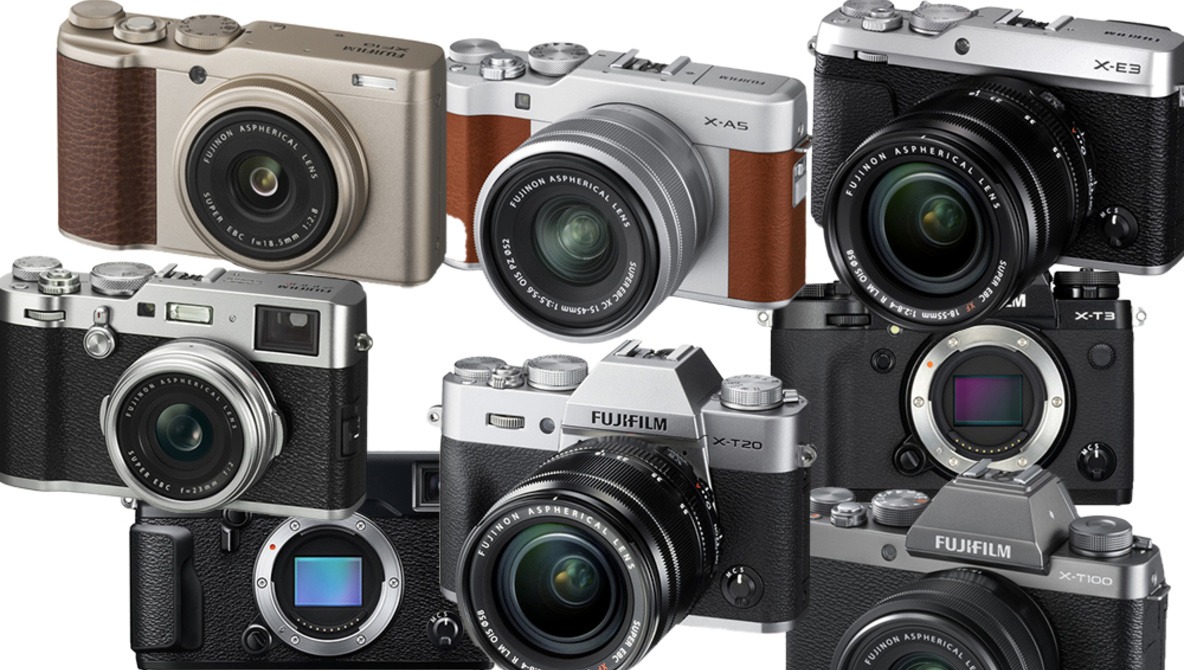


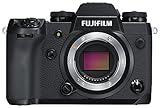







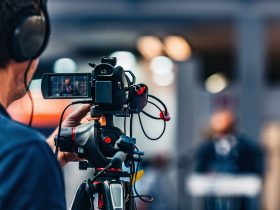
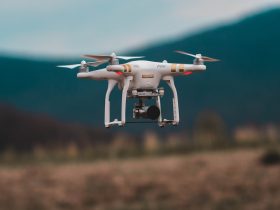
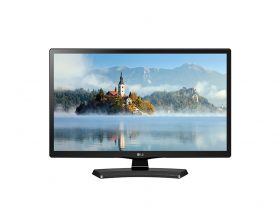
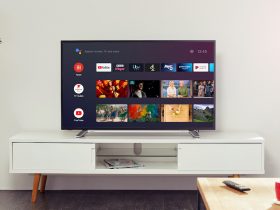
Leave a Reply